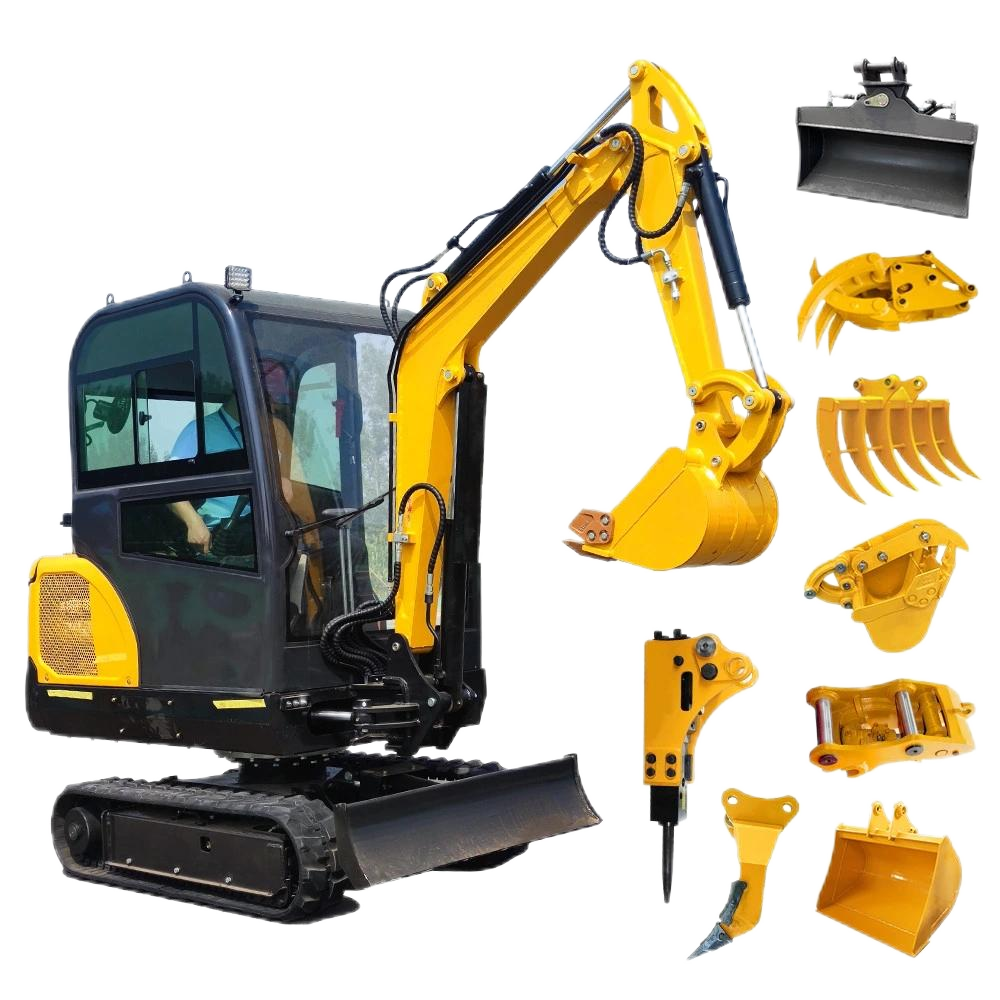When choosing between a wheeled or tracked excavator in the 3-ton class, a comprehensive judgment must be made based on core factors such as the working scenario, ground conditions, and mobility requirements. The following analysis of key differences, applicable scenarios, and a comparison of advantages and disadvantages will help you make a more appropriate choice:

I. Core Differences: Fundamental Distinctions Between Wheeled and Tracked Excavators
| Comparison Dimension | Wheeled Excavator (3-ton class) | Tracked Excavator (3-ton class) |
|---|---|---|
| Travel Mode | Tires (usually 4 or 6 wheels) | Track links (metal tracks, some can be equipped with rubber tracks) |
| Ground Adaptability | Suitable for hard surfaces (concrete, asphalt, hardened sites) | Suitable for soft surfaces (muddy, sandy, grassy, gravelly ground) |
| Movement Speed | Fast (typically 20-40km/h, can relocate short distances independently) | Slow (typically 5-10km/h, requires a trailer for long-distance transportation) |
| Ground Pressure | Higher (small tire contact area, easy to get stuck in soft ground or damage lawns) | Lower (large track contact area, minimal damage to the ground) |
| Operational Stability | Poor (weak tire grip, easy to slip on slopes or soft ground) | Good (strong track grip, more stable on slope operations) |
| Maintenance Cost | Lower (tires are easy to replace when worn, simple maintenance) | Higher (track links, carrier rollers and other components are prone to wear, complex repairs) |
II. Recommended Application Scenarios
1. Scenarios Where Wheeled Excavators Are Preferred
- Mainly working on hard surfaces: Such as urban municipal maintenance (excavation on sidewalks, hardened roads), operations in factory workshops, material handling on concrete sites, etc. Tires will not cause rolling damage to hardened ground, and movement is convenient.
- Frequent relocation needs: If short-distance movement (within 5-10 kilometers) between multiple construction sites (such as adjacent villages, different urban road sections) is required, wheeled excavators can relocate by themselves without relying on trailers, saving time and transportation costs.
- Short-distance movement in indoor or confined spaces: For example, operations in warehouses or low-rise buildings, wheeled excavators have flexible steering and are suitable for adjusting positions in narrow hard surfaces.
- Mainly light-duty operations: Such as small-scale earthmoving, leveling hardened sites, auxiliary loading and unloading of light materials (bricks, sand), the flexibility and low-cost advantages of wheeled excavators are more obvious.
2. Scenarios Where Tracked Excavators Are Preferred
- Soft ground or complex terrain: Such as rural farmland sorting, fishpond dredging, orchard operations (muddy land), grassland/woodland construction (rubber tracks can be equipped when vegetation protection is needed), small mountainous or slope operations (slope ≤15°). The low ground pressure of tracks can avoid getting stuck, and the grip is strong.
- Need for stable operations: Such as deep excavation (1.5-3 meters), crushing operations (equipped with a breaker to crush concrete blocks), slope trimming, etc. The stability of tracks is better, reducing the risk of shaking or slipping during operations.
- High requirements for ground protection: Such as landscaping (to avoid tire rolling on lawns), wetlands or farmland (to prevent soil compaction from affecting crop growth), tracks have a large contact area and cause little damage to the ground.
- Long-term fixed-site operations: If working continuously at a single construction site (such as foundation excavation of small construction sites, courtyard renovation) without frequent relocation, the durability and operational stability of tracked excavators are more suitable.
III. Supplementary Key Factors
- Operation intensity: Tracked structures are stronger and suitable for long-term high-frequency operations (such as excavation and crushing for more than 8 hours a day); wheeled tires and chassis have limited load-bearing capacity, and high-intensity operations can easily lead to tire wear or chassis deformation.
- Seasonal impact: Tracked excavators are preferred in rainy seasons or muddy areas; wheeled excavators can be chosen in dry hard ground or icy roads in winter (anti-skid tires need to be replaced).
- Cost budget: The initial purchase/lease cost of wheeled excavators is usually 10%-20% lower than that of tracked excavators of the same tonnage, and later maintenance (tire replacement, maintenance) is cheaper, suitable for individual owners or small construction teams with limited budgets.
IV. Summary of Recommendations
- Simple judgment formula: More hard roads, frequent relocation, light work → wheeled; more soft roads, complex terrain, high intensity → tracked.
- Compromise solution: If the operation scenario involves both hard ground and slightly soft ground, tracked excavators with rubber tracks can be chosen (reducing damage to hard ground while adapting to slightly soft ground), but the cost will be slightly higher.
According to the specific ground conditions, movement frequency and intensity of the operation, combined with the advantages and disadvantages of both, the more suitable type can be determined.





